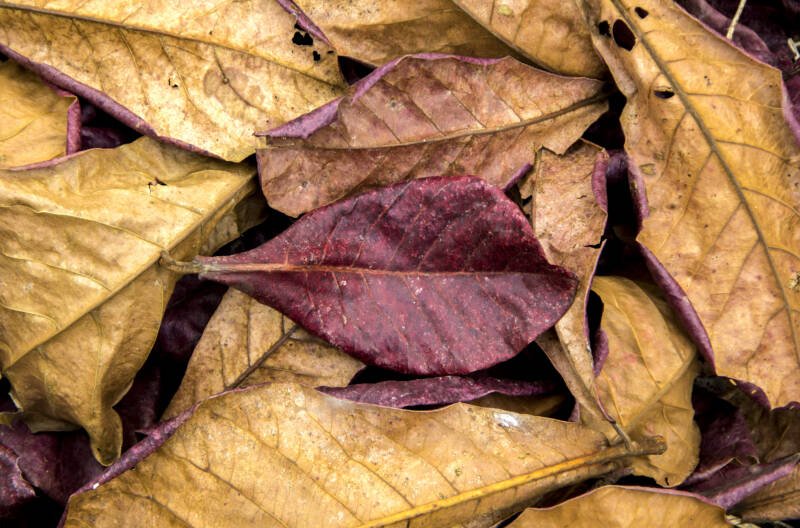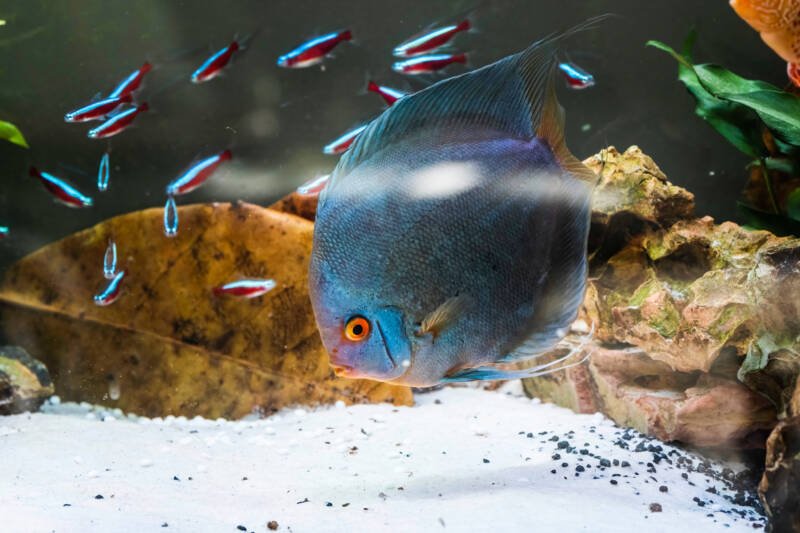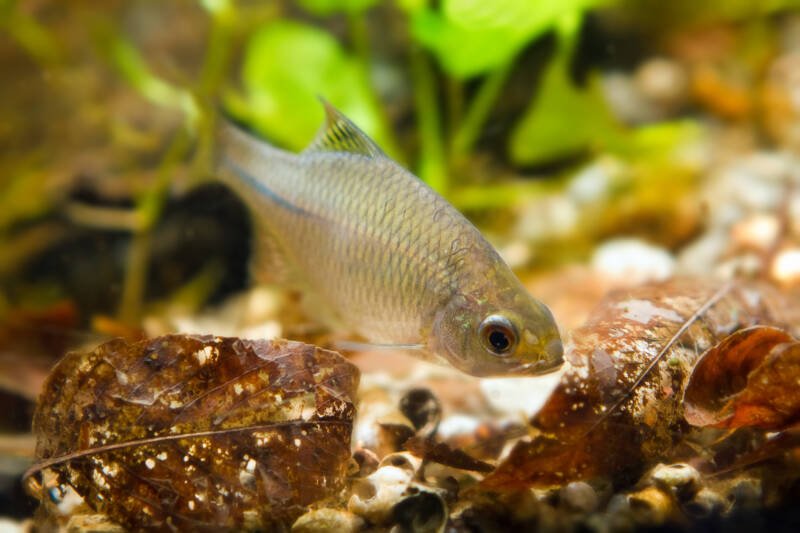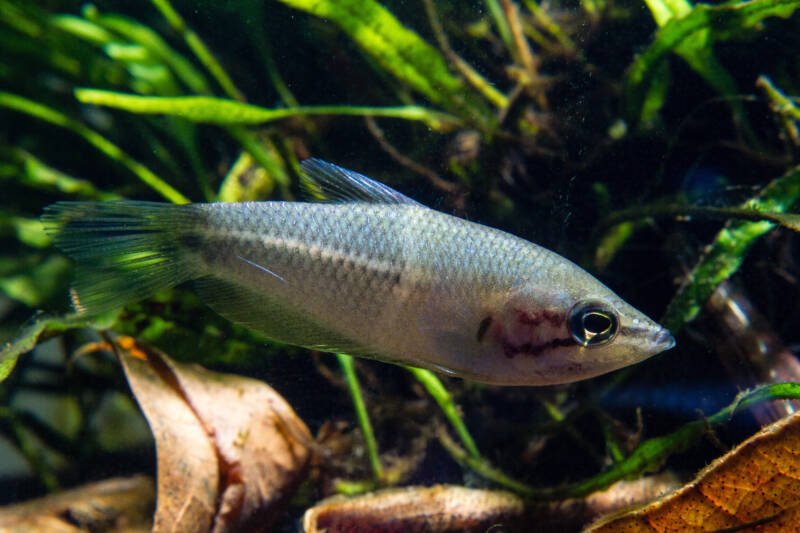The use of botanicals in the aquarium is on the rise. Aquarists have been experimenting with natural plant materials for decades to find out if they have beneficial properties.
Indian almond leaves or catappa leaves are an all-natural way to keep your fish healthy and colorful.

In this article
What are Indian almond leaves?
The Indian almond tree (Terminalia catappa), also known as the Tropical Almond and Java Almond, is found in Africa, India, China, Vietnam, Indonesia, and the Philippines.

The medium-height trees are often found growing where rivers empty into seas, along beaches and coastal plains.
The green leaves are smooth and shiny when fresh. They turn reddish when they fall off the trees.

Health benefits of Indian almond leaves
In folk medicine, almond leaves and seeds have been used to treat a variety of human diseases.
Natural compounds in the leaves, like tannins and flavonoids, have natural anti-fungal and anti-bacterial properties.
History of Indian almond leaves in the aquarium

Commercial betta breeders have been using almond leaves for many years to improve fish color, stimulate breeding, and fry survival.
It was a trade secret for a long time, but eventually, word got out that the leaves improved fish health, breeding, and disease resistance.
Betta Breeding
It’s no surprise that serious betta breeders use these leaves to keep the fish’s eggs and fry alive. The eggs can be ruined by fungus. Delicate fry can also become sick due to bacteria in the water.
Almond leaves are completely compatible with baby fish and adult bettas.
Are Indian almond leaves only for bettas?

No. The leaves can be used in any freshwater aquarium where you want to add tannins and make use of the anti-disease properties. Here is a list of uses for Indian almond leaves.
Shrimp Tanks

Exotic freshwater shrimp are sensitive to water quality. If the shrimp are stressed, they’re more likely to come down with a bacterial disease.
Most medications will kill shrimp, but not Almond leaves.
Shrimp enthusiasts use the leaves for disease prevention and to provide some cover for the curious shrimp. Shrimp will also feed on live foods that live on the surface of the leaves.
Fish Breeding
While the leaves got their start with betta breeders, they can be used with any freshwater fish.
The leaves are most often used with breeders of dwarf cichlids like Apistogramma, angelfish, discus, and other soft water fish.
General Aquarium Use
Even if you’re not a fish breeder, you can use Indian almond leaves. Experience shows almond leaves are most popular with aquarists keeping fish in medium to soft water with fish that live in a neutral to acidic environment.
Goldfish and African cichlid enthusiasts tend not to use Indian almond leaves.
If you want to try them out in your alkaline aquarium, write and tell us about it!
The leaves on the bottom of the tank give fish and shrimp a place to explore or hide. Snails will also graze on the thin coating of algae that live on the leaves.
Disease Prevention
Experience seems to indicate that Indian almond leaves act more as a preventative than a medication to cure an already sick fish.
How to use Indian almond leaves

There is no specific formula for adding almond leaves to your tank. In general, the more you add, the more tannins will be released. This will cause the water to take on a tea-like tint.
How many leaves do I use?
A good start is to use about two leaves per 10 gallons. For smaller betta tanks, break the leaf in half.
Will my water turn brown?

The more leaves you add, the darker the water. While duplicating Amazonian “blackwater” is certainly natural, not all hobbyists want dark water.
Start with a few leaves and see how your aquarium looks.
How long do the leaves last?
Submerged Indian almond leaves gradually decay in the tank. Natural bacteria digest the leaves, helping to release the tannins.
You’ll see the leaves start to fragment over 30 to 60 days. Many aquarists replace the leaves once a month.
Alternatives to Indian almond leaves
If you don’t like the idea of seeing leaves in your aquarium, there are liquid almond leaf extracts.
These products are easy to use, but you won’t get all the benefits of real leaves in the tank.
Closing Thoughts
If you haven’t tried Indian almond leaves, they’re worth a close look.
Many aquarists see improved health and coloration of their fish. You’ll reduce the chances of disease too.
If you have any questions or comments, please leave them below!